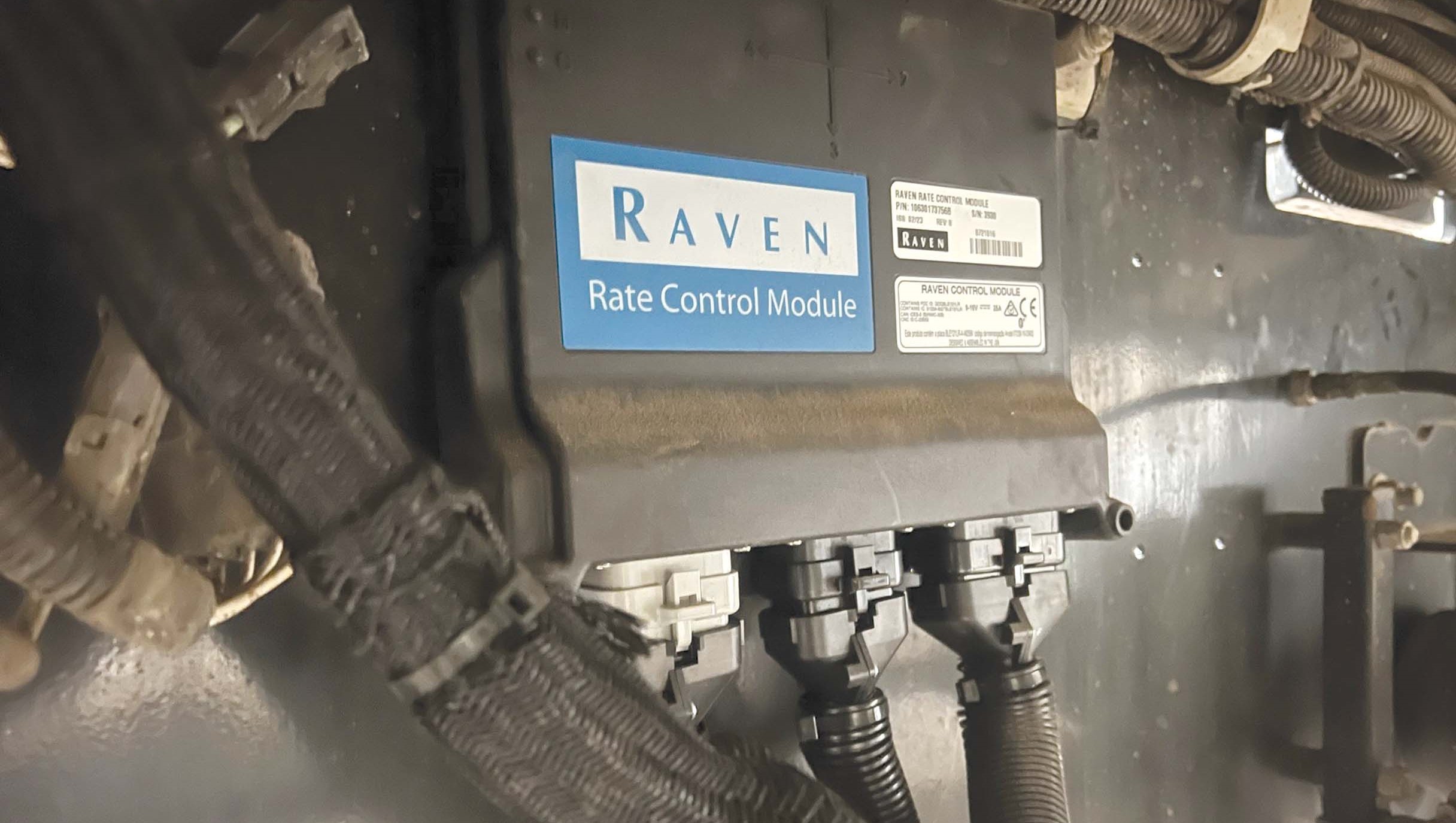Upgrade old drills with VR and section control
The Raven RCM (Rate Control Module) kit can be installed on some older air carts making them capable of variable rate seeding.
Photo credit: Raven Technologies
When walking the aisles at any farm machinery show these days it’s apparent the technology being built into today’s machines is impressive. And those high-tech, digital features are now driving sales of new equipment, according to brand executives.
David Altrogge, a grower near Humboldt, Saskatchewan, says he “really wanted to move to” variable rate (VR) fertilizer application but the cost of a new VR capable drill was just too high for his operation. And he would also need a larger tractor capable of handling the horsepower demands of a new, larger VR-equipped model. “I’d be looking at an investment of about three quarters of a million dollars,” he says.
Altrogge farms 2,300 acres and “most of the equipment we get is five to 10 years old,” he says. “Smaller farmers want to get into that technology. We want to grow as good a crop as the big farmers do. But in order to get there, that’s the dilemma we’re facing. The companies are just making the equipment too big to get the technology.”
However, upgrading an older drill is now a viable alternative. Altrogge managed to find a firm, MY Precision Ag Ltd., that could add VR to an older drill for him.

“There are more and more people wanting to upgrade tanks to get the newer technology,” says Matthew Yanick, owner of MY Precision Ag, which is based in Rocanville, Saskatchewan. “They don’t need the newer tank specifically or a bigger tank. They just want to be able to do what the new tanks can do.” Yanick’s main focus right now is using Raven RCM (Rate Control Module) kits to convert old air carts to do full variable rate. The Raven RCM kit is fully ISOBUS-compatible so can run with multiple different displays.
“If you have say a John Deere, Case monitor or Trimble ISO, you can run the control through that, so you have less monitors in the cab as well,” Yanick says. “That’s what lots of guys like. They can have one monitor in the cab to do everything, and get rid of their old switch boxes and extra monitors They then have full functionality to do variable rate control for all the bins on their cart as well as drill control.”
Although the Raven RCM is a generic kit that can be retrofitted onto different models of carts, Yanick says there are often some things that need to changed to make it work.
“You can’t just take the kit out of the box, plug it in and go,” he says. “You have to change some connections. We’ve been working to have all the connections and parts ready, so when the kit shows up we can change a few things and be ready to go a lot quicker.”
The Raven kit will work on a number of different models. “Basically anything that has an electric actuator can be used to change the rate,” he adds. “There are hydraulic options as well for certain carts.”
The cost for the upgrade varies, depending on features. Yanick says if the tractor is already equipped with an ISO monitor, drill conversion can run around $20,000 to $25,000.
“There are more and more people wanting to upgrade tanks to get the newer technology. They don’t need the newer tank specifically or a bigger tank. They just want to be able to do what the new tanks can do.”
—Matthew Yanick, owner of MY Precision Ag
Altrogge also found a company in Arborg, Manitoba, Romafa Metal Works, that manufacturers new metering boxes for John Deere, Flexi-Coil and Morris drills. This allows for the installation of sectional control. He thinks sectional control combined with VR will save on inputs and help him better manage his fields.
“We have a lot of hills and valleys on our land. I’d end up getting a more even crop, which was one of my goals,” he says. “When it comes to spraying fungicide, if you have a nice even crop it’s easier to make the decision (when to spray). At harvest time the crop all ripens at the same time. It just makes for easier farming.”
And as farmers face mounting pressure to reduce greenhouse gas (GHG) emissions, particularly from fertilizer inputs, retrofitted older, affordable equipment could help smaller growers do just that.
“When they look at reducing GHG emissions from agriculture, the first thing they look at is fertilizer,” Altrogge says. “But you get a lot of small farmers that aren’t capable of reducing their carbon footprint because the equipment is not out there for them to move to that new technology.
“Years ago with the environmental farm program they were encouraging everyone to move to direct seeding, and there were some incentives to help with capital costs and re-do your air drill.
It would be great if there were some government incentives for farmers to change their air drills so they could have sectional control and even VR.”
Yanick also sees retrofitting VR as a way to improve demand for, and the value of, older carts.
“In my opinion if dealers take older stuff on trade, this is an avenue to be able to sell them and add more value to them,” he says. “As the younger generation takes over farms, they see the value of technology more and more and they want to be able to do VR, full mapping and have all that data. So you need something like this to tie all those features into it. With an old system with an on-off clutch, there’s no mapping, no nothing.”





